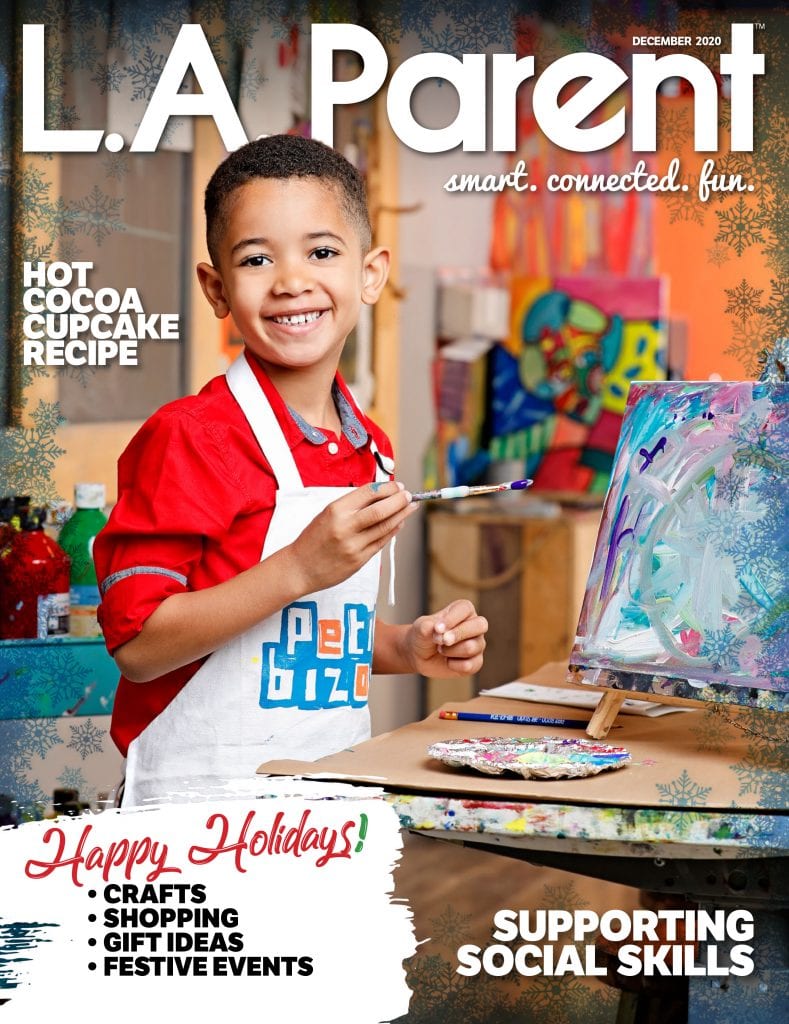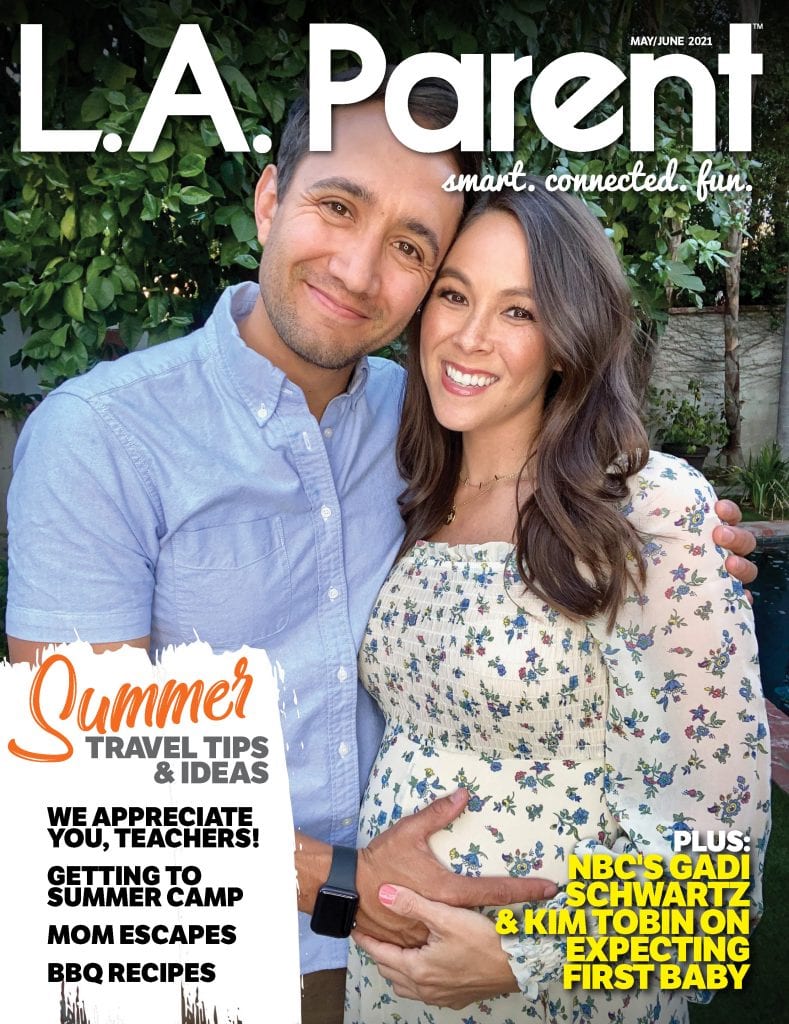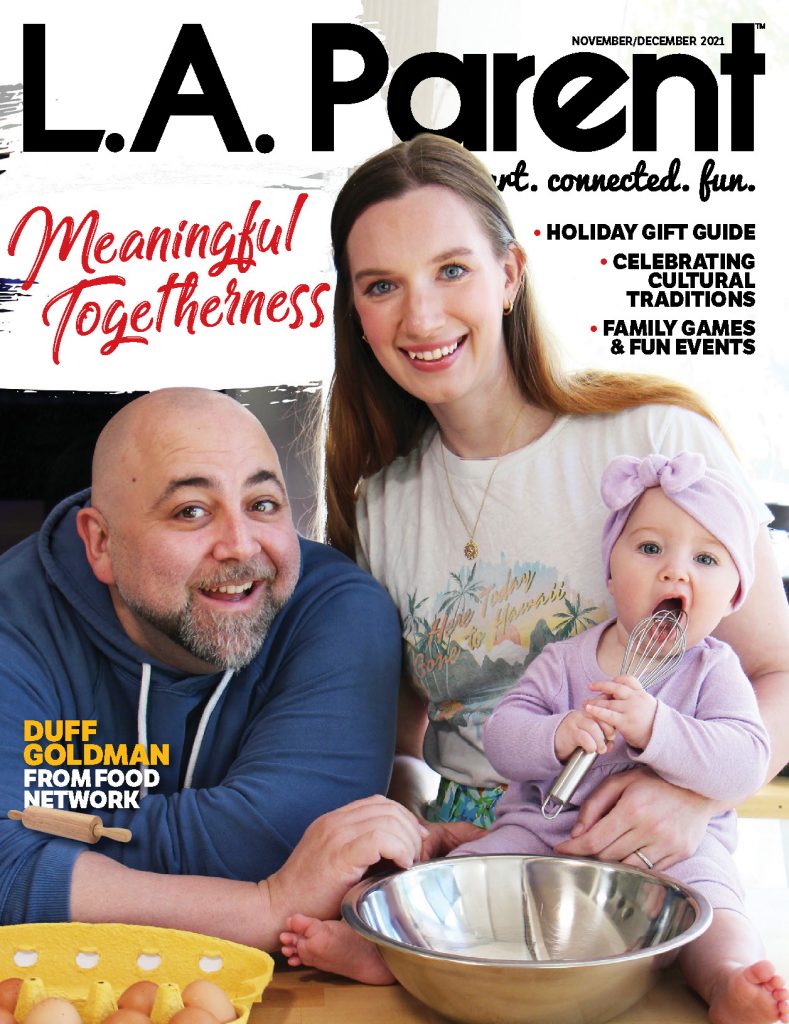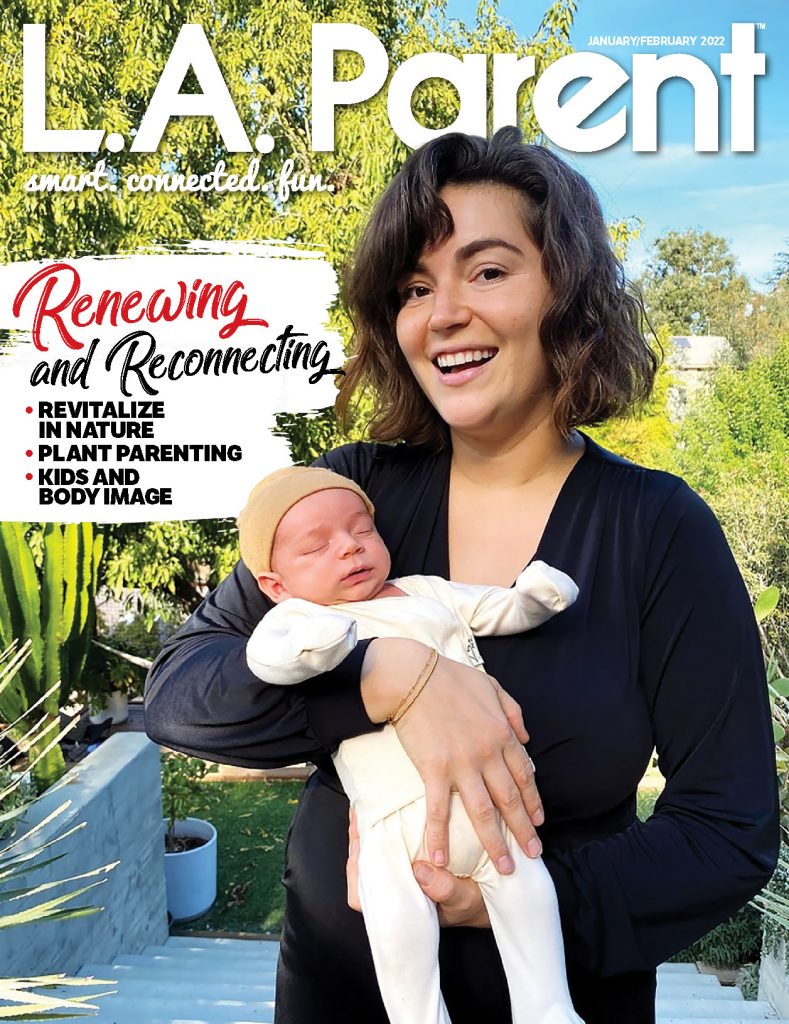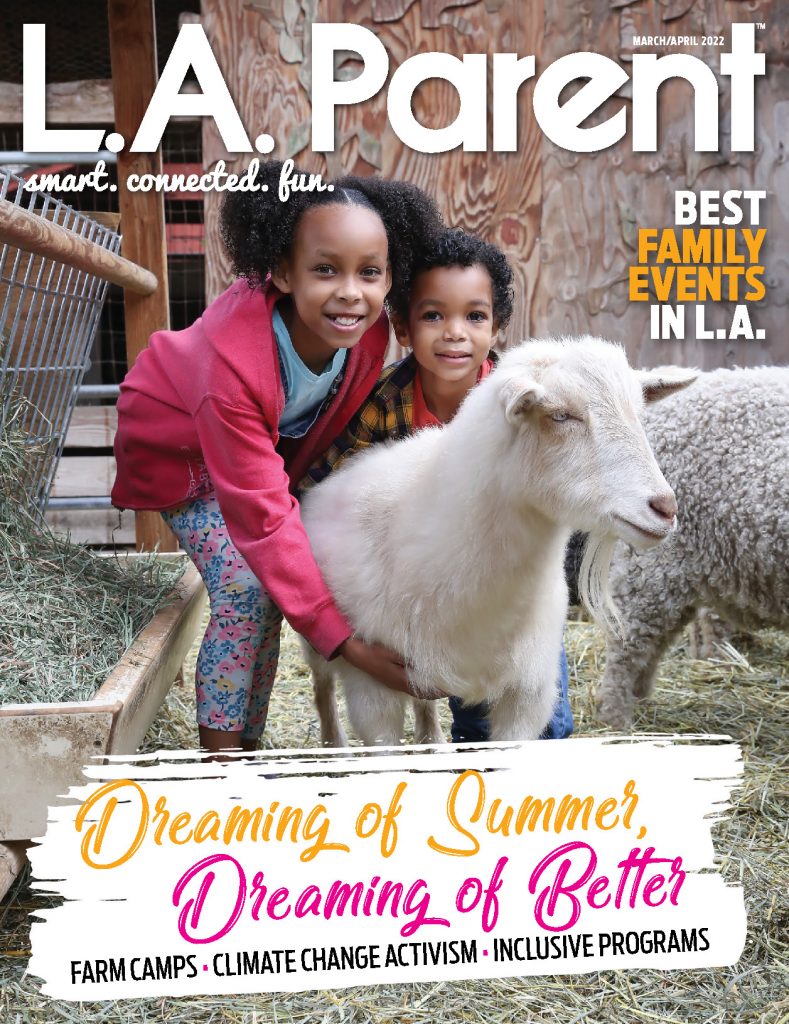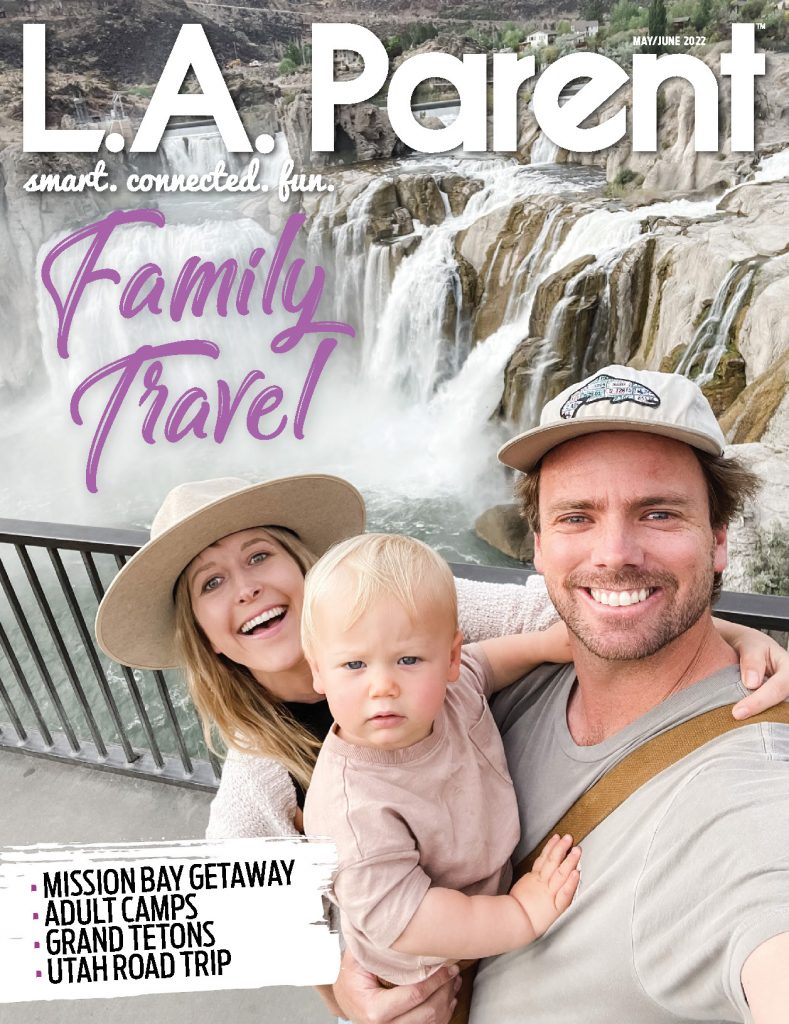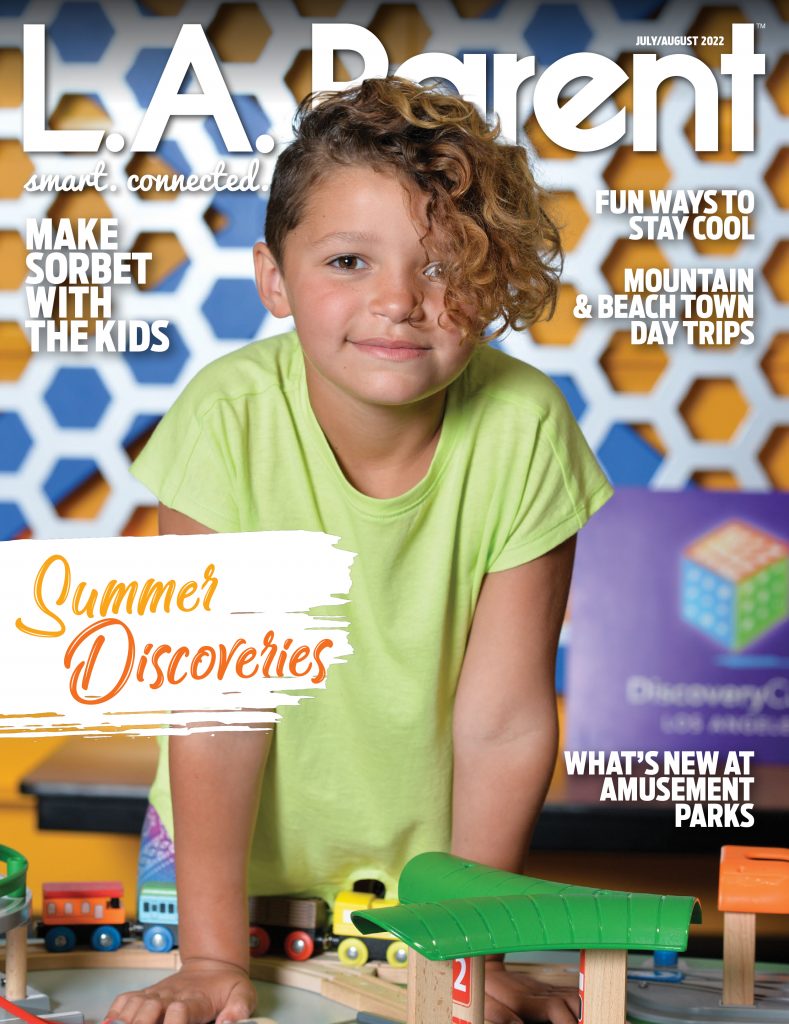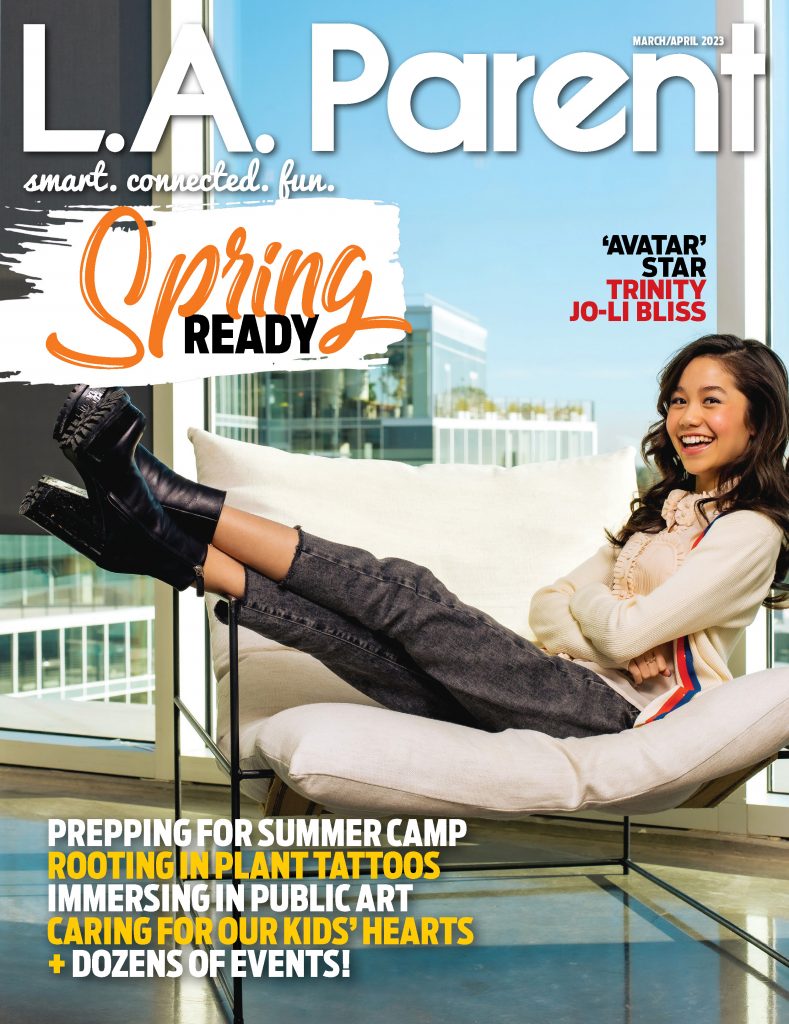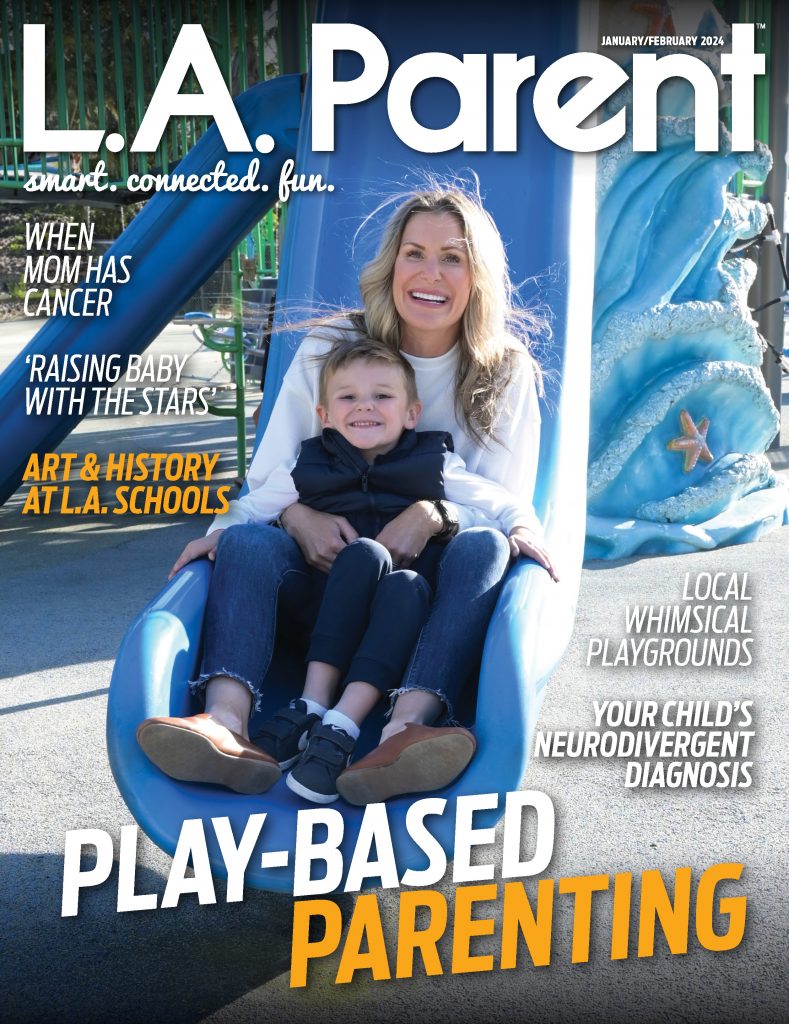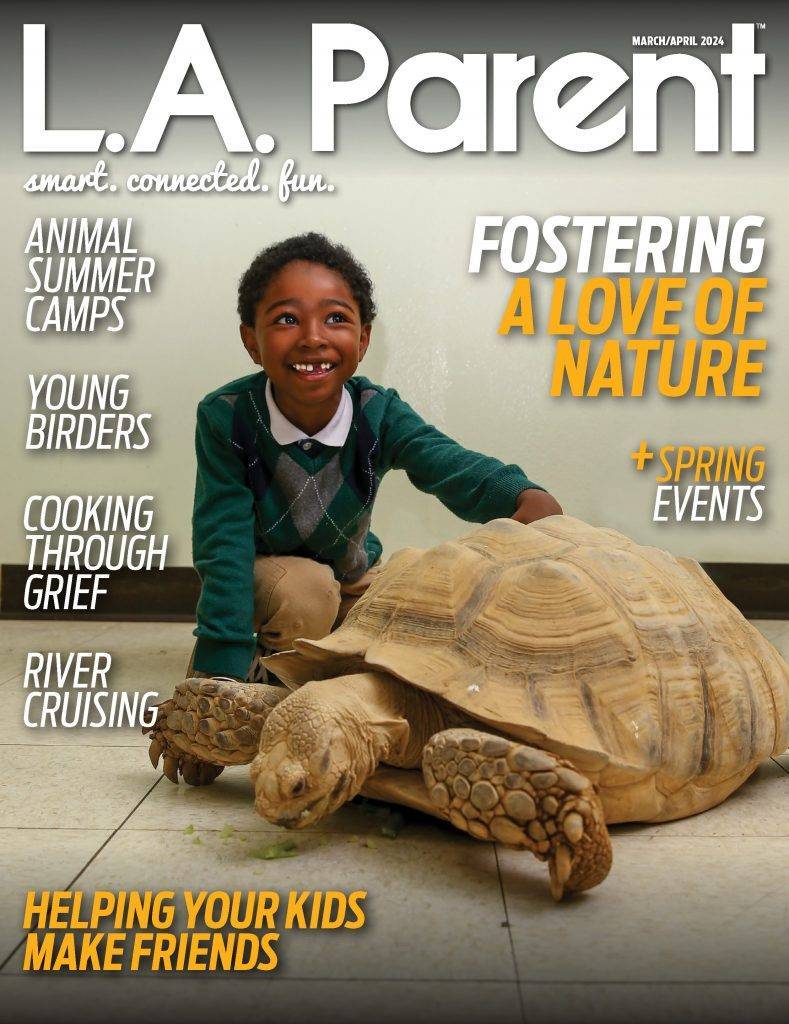
Lourdes Mack, 13, at left, was born with spina biffida and uses a wheelchair. Her sister, Diana, 18, has Cohen syndrome. PHOTO BY MATHER PHOTOGRAPHY
Vincent Van Dyk was born with a rare condition called Wolf-Hirschhorn syndrome, a genetic disorder that causes developmental delays, delayed growth and other issues. “When we first got his diagnosis, it was really scary,” says his mom, Felicia. “I thought back to my own childhood, how kids used to make fun.”
Still, Van Dyk decided to make sure Vincent, who is now 12, was fully included when he started attending Rio Vista Elementary School in Studio City. And she says his inclusive experience there from kindergarten to second grade made a huge difference. Vincent’s hearing is impaired, and he was using only sign language to communicate, but he began talking. “That was just amazing for him,” says Van Dyk. “He’s communicating in full sentences because he’s seen his friends do that.”
Inclusion – giving children with developmental and physical challenges the opportunity to learn and play along with their typical peers – is an evolving idea. Once referred to as “mainstreaming,” it has expanded to mean much more than just bringing “special-ed” kids into the “regular” classroom.
Why Inclusion Matters
Kids with developmental delays benefit from having the friends and role models they find in the regular classroom. Nicte Mack placed her daughter Diana in regular classrooms for third and fourth grade. Diana, who is now 18, has Cohen syndrome, which causes developmental delays, immune system issues, autism and partial blindness. “We realized how important it was going to be for Diana to have an experience of contact with her regular peers,” says Mack.

Nancy Litteken, left, executive director of Club 21 Learning and Resource Center in Pasadena, works to ensure that her daughter, Molly, is fully included in the classroom and beyond. PHOTO COURTESY NANCY LITTEKEN
Diana is now in high school in Santa Monica and transitioning to an adult program, but the effects of her inclusive experience have stayed with her. “I’m very happy that she had that experience,” Mack says, adding that Diana’s conversation is appropriate for someone her age, and she picks up a lot from her peers. “She likes to copy them a lot. She knows where she should be at this point in her life. She’s able to start a conversation.”
Nancy Litteken started her daughter, Molly, who has Down syndrome, out in an inclusive preschool, but because of some behavior issues, decided to move her to a special day class. “Molly’s kind of spicy, to say the least,” says Litteken. “I went down the road of inclusion, then I thought, she needs a little more help.”
But in the special day class, where there were no language models for Molly, her skills suffered. “Her behaviors escalated because everybody else’s behaviors were escalating,” Litteken says. The next year they moved Molly to a regular kindergarten classroom.
Litteken, who is executive director of Club 21 Learning and Resource Center, a nonprofit dedicated to providing the tools and resources to allow individuals with Down syndrome to be fully included in society, says there is a place for special day classes and special education, but that the goal should be to help children gain the tools and confidence to be part of the general-education classroom. “The problem is that placement is often based on ‘readiness,’ and nobody writes in an IEP what ‘readiness’ looks like,” she says. “Unless there’s a strategy to get them back, they will always be a special-ed kid in a special-ed classroom.”
Kids with challenges need their typical peers, but Litteken says research is showing that typical learners and their teachers also benefit from classroom inclusion. When she sent modified lessons to school for Molly, teachers would routinely ask to make copies for others in the classroom. “Molly didn’t just need a visual aid,” she says. “Three other kids needed those visual schedules. It helped them.”
And collaborative learning strategies that are part of the new Common Core education model support an inclusive classroom. If a teacher asks the class to come up with ideas about how a child can access the lesson, they will learn a lot in the process. When they graduate, these kids will be different. “They will not be the naysayers,” Litteken says. “They will be the people that say, ‘We can do this, we’ll just do it differently.’ These are really important life skills.”
The Ingredients Of Inclusion

Mark Romeo and his wife, Caroline, and daughter Caitlin, who has cerebral palsy, have embraced life in “the lane way to the right of the slow lane.” PHOTO COURTESY MARK ROMEO
Trained teachers: When Molly entered kindergarten, her teacher, whose twin brother also had Down syndrome, was truly committed to inclusion. But the following year, and several after that, were different. “I realized that nobody taught these teachers how to teach an inclusive class,” Litteken says.
To help train teachers in inclusive practices for children with Down syndrome, for the past two-years Club 21 has run a grant-funded program and pays school districts for substitute teachers so that classroom teachers can attend three all-day trainings. They have trained 60 teachers each year. “We give them a vision of an inclusive classroom and the tools and resources to make it happen, and that teacher and that classroom are transformed,” Litteken says. “A good teacher can teach anyone.”
Trained paraeducators: The paraeducators, sometimes called instructional aides, who often assist children included in regular classrooms, can be a barrier to inclusion if the teacher assumes it is the paraeducator’s job to teach the child they are supporting. What often happens is that a student ends up in the back of the classroom with the paraeducator acting as their teacher. “That is not inclusion,” says Litteken. The teacher should assume responsibility for all students, and the paraeducator should be trained to work with the child’s peers and support the teacher in teaching all learners.
Outreach to peers: When Diana was about to start in a regular classroom, Nicte Mack put a plan into action to pave the way. “I stayed after school and I got to know some of the girls,” she says. She introduced Diana to them, organized play dates and let them know that Diana would be starting at their school. She also got to know the other parents. “I had to be friends with the moms. I had to be friends with the kids so my child would have this network of support,” she says. Those girls supported Diana and defended her against bullies and teasing, and some are her friends to this day.
A vision for the future: Having clear goals for a child’s future can help motivate parents to continue the inclusion journey. “If I had to say I’m just here for this year, I would have crumbled a thousand times,” says Litteken. “I would have crumbled at behavior. I would have crumbled at a teacher who didn’t want [Molly]. I would have crumbled at all these things. That vision is what has really grounded me.” Litteken says that the only way for Molly to become independent one day is for her to get practice in the real world, with real-world struggles and relationships. “I don’t want her to work at the special-ed McDonalds. There isn’t one. There isn’t a special-ed grocery store,” she says. Keeping kids segregated denies them the opportunity to practice real-world skills, and the best job coach in the world can’t make up for that lack of practice.
Taking It Beyond the Classroom

A sensory slide at a Shane’s Inspiration playground is accessible to all. PHOTO COURTESY SHANE’S INSPIRATION
The classroom isn’t the only place for kids with cognitive, social and physical challenges to be included and practice navigating among their typical peers. Sue Parker-Strafaci, director of child development services at The Braille Institute, advises parents to provide experiences that help children with challenges become comfortable in the world. Participate in neighborhood activities and activities with family and friends, and start young. “Children don’t recognize the differences as much, especially as toddlers,” she says. “If we start early in life, the obstacles are not near as great.” And if you’re feeling anxious, think through a few possible responses to unkind words or unwelcome stares, or bring a supportive friend along.
Mark Romeo’s oldest daughter, Caitlin, was born in 1994 with cerebral palsy and severe cognitive and physical challenges. At the hospital, Romeo recalls a doctor telling him they couldn’t really predict what Caitlin’s future would hold. “For all we know, she could become a cheerleader,” he said.
The birth of a typically developing daughter, Madeline, two years later, moved things forward. The family even purchased a motor home so they could care for Caitlin on the sidelines during Madeline’s soccer games. “Madeline really forced us to pull Caitlin into the mainstream,” says Romeo.
Romeo says he never avoided going places because he wasn’t comfortable taking Caitlin. Even at the mall, where Caitlin would get so excited she would sometimes make loud screeching noises, he’d just smile at those who stared. And at soccer games, Caitlin – who was in a wheelchair and couldn’t really understand the game – made that doctor’s prediction come true. “She enjoyed the game and she enjoyed the cheering of the crowd,” says Romeo. “She basically became a cheerleader.”
Shane’s Inspiration Playgrounds are another place for children to cheer. The organization creates inclusive spaces where children of all abilities can connect through something that comes naturally to them – play. “Play is organic,” says education programs manager Jennifer Quick. “It meets them where they are. It lets them move past their biases so that they can connect.”

Vincent Van Dyk, right, enjoys the Shane’s Inspiration playground in Chatsworth with his typically developing friend Don. PHOTO COURTESY FELICIA VAN DYK
The organization hosts My PlayClub (www.shanesinspiration.org/my_playclub), which meets for play dates at a different inclusive playground each month for face painting, crafts and snacks. Felicia Van Dyk learned about Shane’s Inspiration when Vincent was still a baby. “Going to those play dates, it helped me network with other families,” she says.
Sometimes a child’s differences can even be a bridge. Nicte Mack’s younger daughter, Lourdes, 13, was born with spina biffida and uses a wheelchair. “We always want to make sure she has the most beautiful wheels she can get,” Mack says. “She likes to show off on her wheelchair.” One of Lourdes’ favorite activities is dancing at Infinite Flow Kids, a Sherman Oaks-based group that pairs ambulatory dancers with those in wheelchairs.
Club 21 has also formed a teen group called Club Connections, where 10 typical teens and 10 teens with Down syndrome are taking a class together, then going to a nearby coffee shop. Their first class has been Modern dance at Lineage Dance Company in Pasadena. “I don’t know, necessarily, how one teaches friendship. Because we base friends on similar interests and enjoying one another, but to find that out you have to be with one another,” says Litteken, who hopes they are on the cusp of figuring that out.
“Inclusion is about a lot of things, but relationships are a priority,” Litteken says. “Our world needs kids with Down syndrome and kids with autism and kids with CP. We need to work for a world where everyone is valued and belongs. It’s not for the faint of heart, and it’s sometimes a lot of work, but it is what we all want in life. Let’s make sure all means all.”
Christina Elston is Editor of L.A. Parent.
